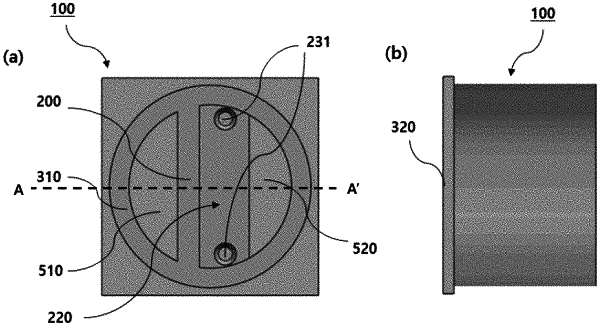| CPC B01L 3/50273 (2013.01) [C12M 23/16 (2013.01); B01L 2300/0858 (2013.01); B01L 2300/0861 (2013.01); B01L 2400/0406 (2013.01)] | 16 Claims |

|
1. A microfluidic device having a microfluidic channel in which at least a surface in contact with a fluid is formed of a hydrophilic material, comprising:
a substrate having a top surface and a bottom surface; outer walls which are attached to the top surface of the substrate such that one or more cavities with an open top are formed and which include an inner surface facing the cavity and an outer surface opposite to the inner surface; inner corner paths formed by the boundary at which the inner surface of the outer wall meets the top surface of the substrate; and
a microfluidic channel module including a top surface, a bottom surface and both ends, disposed in the one or more cavities to cross the inside of the cavity by bonding the both ends to different positions on the inner surface of the outer wall,
wherein a part or all of the bottom surface of the channel module is spaced apart from the top surface of the substrate to form one or more microfluidic channels connected with the inner corner path so the one or more microfluidic channels are configured to move a fluid by capillary force between the bottom surface of the microfluidic channel module and the top surface of the substrate.
|